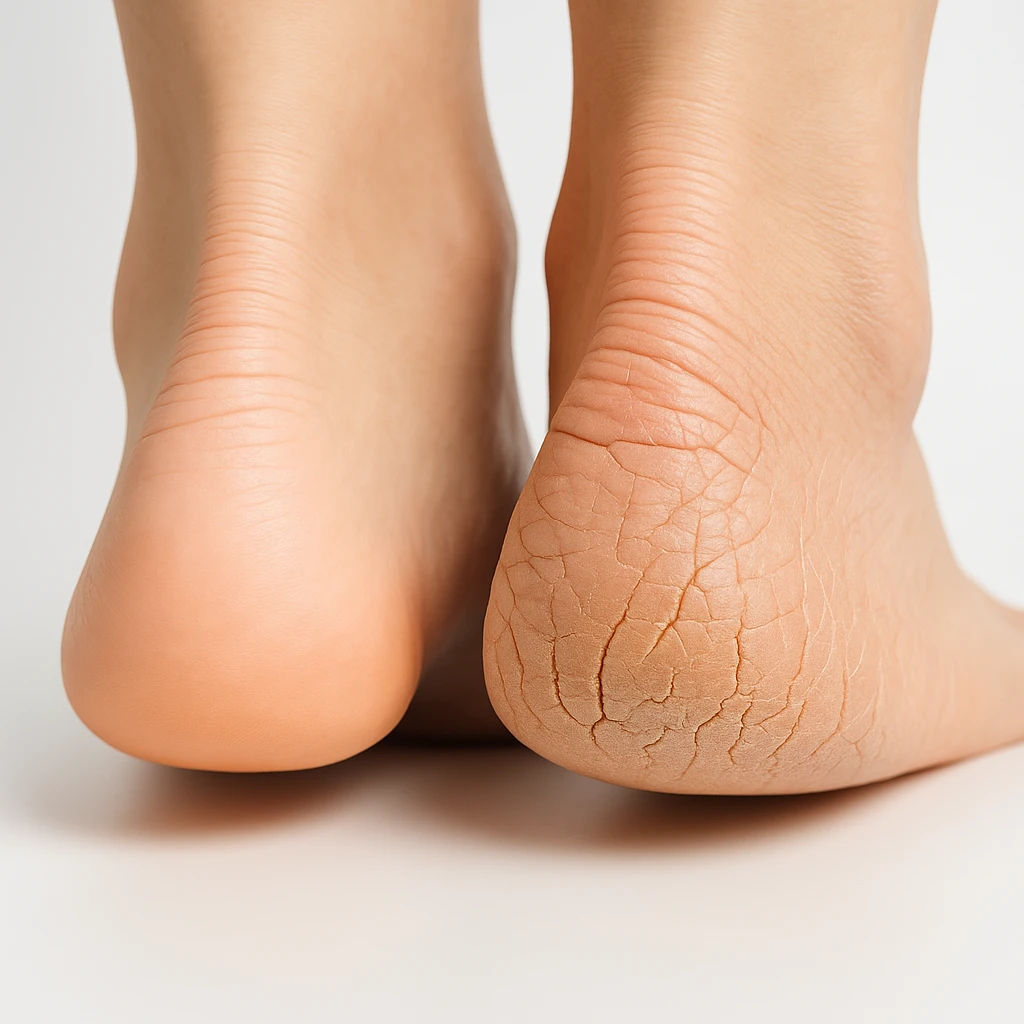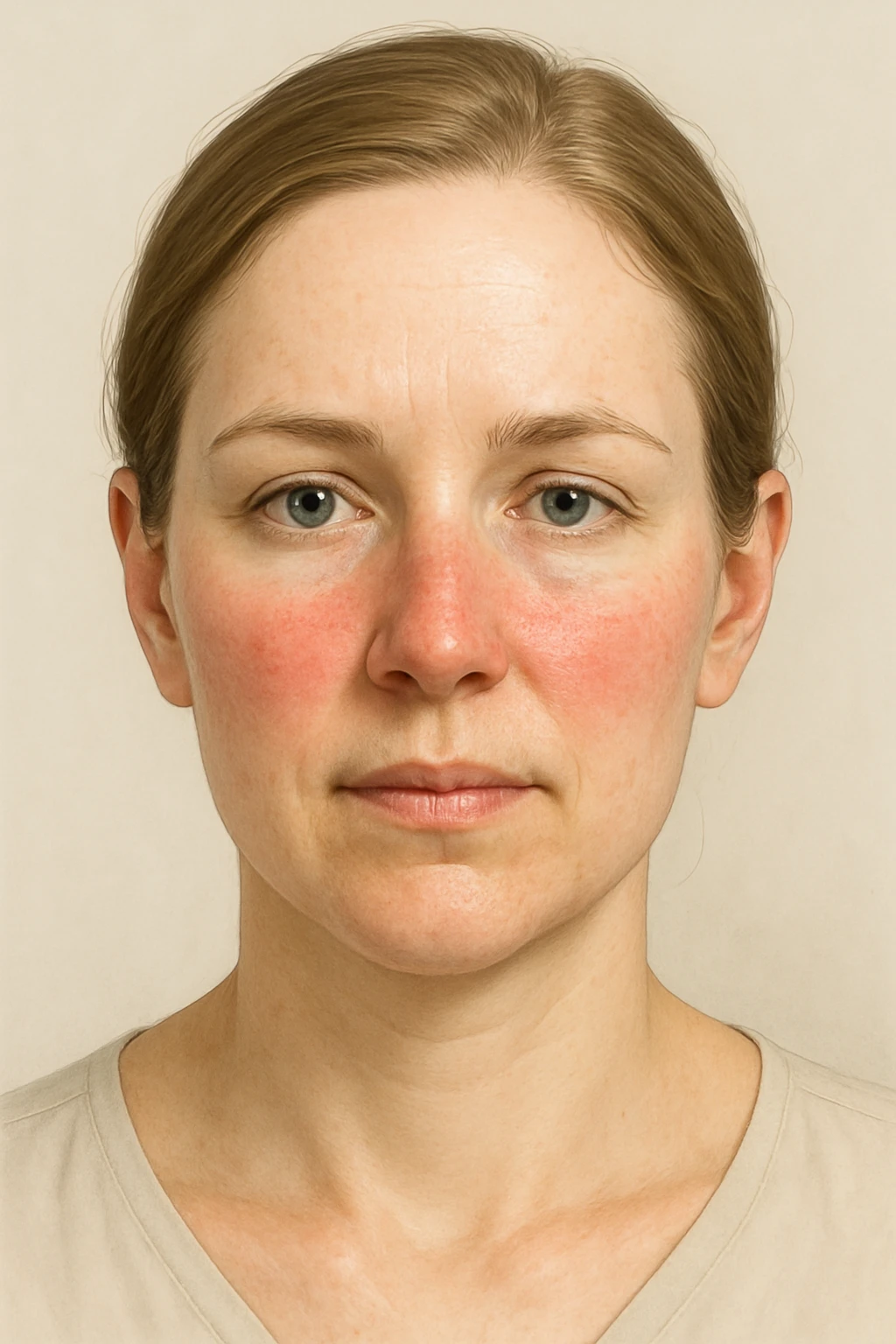Lump on Toe
Lump on Toe: Could It Be Cancer?
- Understanding the Nature of a Toe Lump
- Common Causes of Toe Lumps (Benign and Malignant)
- When Should You Be Concerned?
- Types of Cancers That May Present as a Toe Lump
- Diagnosing a Cancerous Toe Lump
- How Quickly Can Toe Cancer Spread?
- Risk Factors for Developing Toe Cancer
- Treatment Options and Prognosis
- Reconstructive Options After Toe Surgery
- Monitoring for Recurrence or Metastasis
- How This Differs from Benign Toe Conditions
- Emotional and Psychological Impact
- When to Suspect a Lump May Be Cancerous
- Role of Imaging in Diagnosing Toe Cancer
- Can a Toe Lump Be the First Sign of Systemic Cancer?
- Summary Table: Malignant vs Non-Malignant Toe Lumps
- 15+ Frequently Asked Questions (FAQ)
Understanding the Nature of a Toe Lump
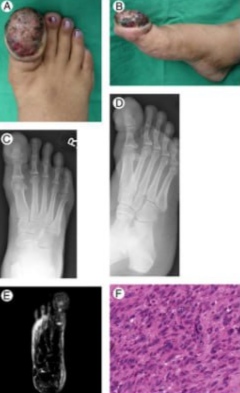
A lump on the toe can arise from various causes—some benign, others more concerning. While most lumps stem from cysts, warts, or trauma-related swelling, rare cases may point to malignancy. It’s crucial to recognize when a lump needs further evaluation to rule out skin cancer, bone tumors, or soft tissue sarcomas.
The toe, despite being a small and often overlooked part of the body, can develop tumors ranging from slow-growing lesions to aggressive malignancies like squamous cell carcinoma or melanoma. Awareness of the physical characteristics—such as firmness, color, ulceration, or rapid growth—is vital in assessing potential cancer risks.
Common Causes of Toe Lumps (Benign and Malignant)
To distinguish a harmless bump from a malignant growth, consider both the clinical presentation and underlying pathology. Here is a comparative breakdown:
| Feature | Benign Causes | Malignant Causes |
| Onset | Gradual | Rapid or sudden |
| Pain | Often absent or mild | May be painful, especially later |
| Appearance | Smooth, movable, non-ulcerated | Fixed, irregular, possible bleeding |
| Examples | Ganglion cyst, callus, wart | Melanoma, sarcoma, squamous carcinoma |
| Change over time | Stable or slow growth | Noticeable changes within weeks |
Benign conditions typically resolve or remain unchanged, while malignant ones often worsen without treatment. If a lump doesn’t respond to conservative measures like rest or topical care, professional assessment becomes essential.
When Should You Be Concerned?
A toe lump should raise concern if it exhibits any of the following:
- Persistent growth beyond four weeks
- Skin breakdown or ulceration over the bump
- Black, brown, or bluish discoloration
- Spontaneous bleeding or crusting
- Loss of nail plate or deformity of the toe
These features could indicate malignancy and warrant urgent evaluation. Some of the warning signs of cancer from head to toe may apply even to small body parts like toes.
Early diagnosis greatly improves treatment outcomes for all types of toe cancer, particularly when biopsy and imaging are performed without delay.
Types of Cancers That May Present as a Toe Lump
Though uncommon, cancerous toe lumps can stem from several tissue types. The most likely types include:
- Subungual Melanoma: Originates under the toenail, often mistaken for bruising or nail trauma.
- Squamous Cell Carcinoma: Can develop on sun-exposed skin or chronic wounds.
- Basal Cell Carcinoma: Rare on toes but possible in fair-skinned individuals.
- Soft Tissue Sarcomas: Develop in connective tissue of toes or foot, can be aggressive.
- Osteosarcoma: A primary bone cancer that may affect toe bones in rare cases.
Each presents differently, but all require biopsy for confirmation. Radiographs, MRIs, and sometimes PET scans are used to assess the extent of spread.
Diagnosing a Cancerous Toe Lump
Identifying whether a toe lump is malignant requires a thorough clinical approach. Physicians start with a physical exam to evaluate characteristics like size, texture, pigmentation, and ulceration. Following this, imaging and tissue sampling are used to confirm a diagnosis.
Diagnostic Flowchart for Toe Lump Evaluation:
| Step | Method | Purpose |
| Physical Inspection | Visual and manual examination | Initial suspicion based on appearance |
| Dermoscopy | Magnified skin analysis | Surface detail visualization |
| X-ray | Imaging of bones | Rules out bone tumors or fractures |
| MRI or CT scan | Soft tissue imaging | Evaluates depth and local invasion |
| Biopsy (punch or excision) | Tissue sampling | Definitive diagnosis |
A biopsy remains the gold standard. The sample is analyzed for cell type, mitotic rate, and structural abnormalities. If malignancy is confirmed, additional tests are done to stage the cancer and check for metastasis.
How Quickly Can Toe Cancer Spread?

The aggressiveness of toe cancer depends on the specific type. For example, squamous cell carcinoma tends to grow locally first, but can metastasize if untreated. Melanoma is particularly dangerous due to its potential to spread through lymphatic channels and blood vessels early on.
In clinical practice, progression can occur over weeks or months. A soft tissue sarcoma may double in size within two months, while a melanoma may remain deceptively small before spreading. Understanding timelines is crucial:
| Cancer Type | Average Time to Spread Without Treatment |
| Squamous Cell Carcinoma | 6–12 months (locally invasive first) |
| Melanoma | As little as a few weeks to lymph nodes |
| Sarcoma | Often < 6 months to adjacent structures |
| Basal Cell Carcinoma | Rarely metastasizes, but locally invasive |
Early intervention halts this timeline significantly, especially when surgical excision occurs before lymphatic involvement.
Risk Factors for Developing Toe Cancer
Several factors may increase a person’s likelihood of developing cancer on the toe, including:
- Long-term exposure to UV radiation, especially on sun-exposed feet
- History of trauma or chronic ulcers on the toes
- Immunosuppression due to organ transplants or HIV
- Genetic predisposition or family history of melanoma or soft tissue sarcoma
- Use of tanning beds or barefoot sunbathing
Toe cancers are more common in older adults, but younger patients are not immune—especially those with genetic syndromes. Chronic inflammation and wounds that don’t heal can also serve as precursors.
Interestingly, some reports suggest links between slow-healing toe injuries and soft-tissue cancers in elderly patients. While rare, such cases reinforce the need for vigilance in persistent lesions.
Treatment Options and Prognosis
Treatment depends on the type, size, and stage of the cancer. Surgery is the most common approach, often involving excision with clear margins. If the cancer has spread, lymph node removal and chemotherapy may be needed.
| Treatment Type | Description | When Used |
| Wide Local Excision | Removes tumor with safety margin | Primary approach for localized tumors |
| Mohs Surgery | Layer-by-layer removal with margin analysis | For skin-based cancers with cosmetic priority |
| Amputation | Partial or total removal of the toe | In cases of aggressive or bone-involved tumors |
| Radiation Therapy | High-energy beams to destroy cells | Adjuvant or palliative treatment |
| Chemotherapy | Systemic drug treatment | Advanced-stage disease |
The overall prognosis is excellent if diagnosed early. For example, early-stage squamous cell carcinoma has a 90–95% five-year survival rate. Delayed diagnosis, however, significantly lowers survival odds due to potential metastasis to lymph nodes or distant organs like the lungs.
Patients undergoing regular checkups, skin surveillance, and prompt treatment enjoy the best outcomes.
Reconstructive Options After Toe Surgery
For patients undergoing partial or full toe amputation due to cancer, reconstruction becomes an important part of recovery—both functionally and psychologically. While small excisions may heal without intervention, more extensive removals often require reconstructive plastic surgery.
Reconstruction techniques include:
| Method | Purpose | Commonly Used For |
| Skin grafts | Cover defects with donor skin | After wide excisions |
| Local flaps | Rotate adjacent tissue | When structural support is needed |
| Free tissue transfer | Move skin, muscle, or bone from other site | For major loss or weight-bearing areas |
| Prosthetic toe implants | Functional or cosmetic replacement | Rare, more for appearance |
The choice depends on the tumor’s location, depth, and patient’s lifestyle. A multidisciplinary team—oncologist, podiatrist, plastic surgeon—is often involved in planning.
Monitoring for Recurrence or Metastasis
Post-treatment surveillance is essential to detect recurrence. Patients are usually monitored for at least 5 years. The frequency and type of follow-up depend on the original cancer’s behavior.
Recommended Monitoring Protocol (Example):
| Time After Surgery | Action | Frequency |
| 0–12 months | Physical exam, imaging if needed | Every 3 months |
| 12–36 months | Skin and lymph node checks | Every 6 months |
| 36–60 months | General surveillance | Annually |
Patients are also taught self-monitoring skills, including visual checks and awareness of lymph node swelling. If symptoms reappear—persistent pain, new nodules, or ulcers—a follow-up biopsy or scan is scheduled.
This close monitoring mirrors strategies seen in other skin-based malignancies such as Basal Cell Carcinoma and Melanoma.
How This Differs from Benign Toe Conditions
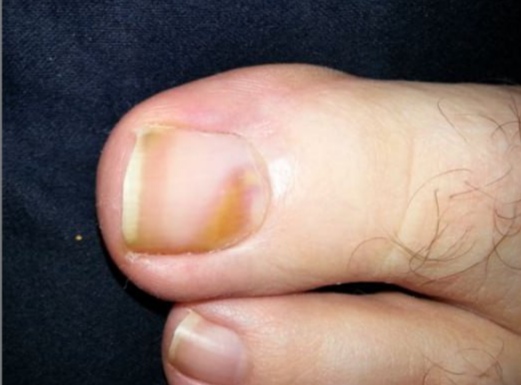
A cancerous toe lump may resemble benign conditions like warts, bunions, cysts, or ingrown nails. However, the key differences lie in their growth behavior, resistance to treatment, and cellular composition.
Here’s a direct comparison:
| Feature | Benign Lesion | Malignant Lesion (Cancer) |
| Growth Rate | Slow or stable | Rapid or changing |
| Pain | Usually mild | Increasing or persistent |
| Color | Uniform | Discolored, patchy, or bleeding |
| Response to treatment | Resolves with basic care | No improvement, often worsens |
| Borders | Well-defined | Irregular, spreading |
Biopsy remains the only definitive way to distinguish between them. Misdiagnosis delays appropriate care and can worsen prognosis.
Emotional and Psychological Impact
Toe cancer—even when treated successfully—can bring lasting emotional challenges. Patients report fear of recurrence, body image concerns, and anxiety about movement or walking. Some feel embarrassment or isolation, especially if disfigurement occurred.
Studies show that early counseling and peer support greatly improve mental health outcomes. Oncology centers increasingly include psychologists and physiotherapists in cancer care teams.
Moreover, connecting with patients facing similar challenges—through online groups or rehabilitation programs—has been shown to:
| Psychological Support Benefits | Outcome |
| Peer groups | Reduced isolation |
| Physical therapy | Improved confidence |
| Psychiatric counseling | Lower anxiety and depression |
| Oncology social workers | Access to financial resources and coping tools |
These services help patients return to daily life with resilience and optimism, rather than trauma.
When to Suspect a Lump May Be Cancerous
While not every lump on the toe is cancerous, certain red flags should prompt immediate medical evaluation. Understanding the subtle cues can mean the difference between early treatment and advanced-stage disease.
Key warning signs include:
| Feature | Description |
| Persistent enlargement | Grows over weeks or months without signs of healing |
| Skin breakdown or ulceration | Open sore that does not close or becomes crusty |
| Color changes | Becomes darker, redder, or shows mixed pigmentation |
| Spontaneous bleeding | Bleeds without trauma or pressure |
| Numbness or tingling | Indicates possible nerve involvement |
| Hardness to the touch | Feels immobile or deeply embedded |
In these cases, even if the lump appears minor, a biopsy is strongly recommended.
Role of Imaging in Diagnosing Toe Cancer
Imaging plays a crucial role when cancer is suspected. While physical examination and biopsy are the gold standards, scans help determine the depth and possible spread.
Most common imaging tools include:
| Imaging Type | Purpose | When Used |
| X-ray | Check bone involvement | If tumor is near or under toenail |
| MRI | Evaluate soft tissue, tendon, nerve spread | For large or ambiguous masses |
| Ultrasound | Surface evaluation, cystic vs. solid | Initial screening tool |
| PET/CT scan | Look for distant spread (metastasis) | In confirmed cancers for staging |
This aligns with techniques used to detect hidden malignancies in skin-related metastases, including skin manifestations of Breast Cancer.
Can a Toe Lump Be the First Sign of Systemic Cancer?
While most toe cancers are primary (they start in the toe), in rare cases, a lump on the toe may be a metastasis from another part of the body. This is extremely uncommon but has been documented in advanced lung, kidney, or breast cancers.
Doctors consider this possibility if:
- The patient has a known history of another cancer
- Multiple unusual symptoms are present
- The toe mass is accompanied by pain in unrelated areas
In such cases, a biopsy followed by systemic imaging (CT, PET) helps determine the source. It’s similar to how some dental implants have been questioned for their association with secondary cancer presentations.
Summary Table: Malignant vs Non-Malignant Toe Lumps
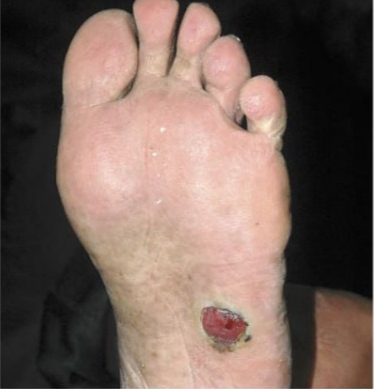
To aid understanding, here’s a recap of key differences between benign and malignant toe lumps:
| Feature | Benign Conditions | Malignant Cancer |
| Pain | Often mild or intermittent | Progressive, constant |
| Surface | Smooth, well-defined | Ulcerated, crusted, bleeding |
| Mobility | Usually movable | Firm, fixed to deeper tissues |
| Time course | Resolves or stable | Enlarges rapidly |
| Treatment response | Improves with basic care | Unresponsive or worsening |
This overview can assist patients and caregivers in recognizing when to escalate care or seek a specialist.
15+ Frequently Asked Questions (FAQ)
Can a lump on the toe be caused by a fungal infection?
Yes, certain fungal infections, particularly under or around the toenail, can cause thickening, swelling, or raised lesions that may resemble a lump. However, fungal infections usually come with other signs like discoloration, flaking, or foul odor. A medical exam or culture test can differentiate it from more serious causes like cancer.
Is a painful lump more likely to be cancer?
Not necessarily. Many benign toe conditions—such as ingrown toenails, abscesses, or cysts—cause pain. Some cancers, especially early squamous cell types, may be painless. What’s more concerning is a lump that persists, enlarges, or becomes ulcerated over time.
Can arthritis cause a lump on the toe?
Yes, especially in forms like rheumatoid arthritis or gout. These lumps are called tophi or nodules and often result from crystal buildup or chronic inflammation. Although they are not cancerous, their appearance can be alarming and should be evaluated.
Does diabetes increase the risk of toe cancer?
Diabetes itself does not directly increase cancer risk in the toe, but diabetic patients often experience reduced immune response and poor wound healing. These factors may allow other conditions to worsen or mimic cancer. It’s crucial for diabetic patients to monitor foot changes closely.
Can a toe lump appear overnight?
Cancer-related lumps usually develop over time, not overnight. A sudden lump is more likely due to trauma, infection, or fluid collection. However, if it persists or grows, medical evaluation is still necessary.
Are there specific types of cancer that spread to the toe?
Rarely, metastatic cancers like lung, kidney, or breast cancer may present with secondary growths in distal bones, including the toes. When they do, they often cause bone erosion, pain, or visible deformity. Whole-body scans are typically required to confirm the source.
Is it safe to ignore a small, painless toe lump?
Ignoring a lump—especially one that changes shape, color, or size—is not recommended. Even painless lesions can be malignant. Early diagnosis improves outcomes dramatically, especially in skin cancers like squamous cell carcinoma.
What kind of doctor should I see for a toe lump?
Start with a primary care physician or podiatrist. If cancer is suspected, referral to a dermatologist, oncologist, or orthopedic oncologist may be needed. Biopsies and imaging will guide further treatment.
Can a biopsy on the toe be dangerous?
Biopsies are typically safe and minimally invasive, even on toes. However, healing may take longer due to limited blood flow in extremities. In rare cases, if the tumor is deep, a surgical biopsy may be required under anesthesia.
Is surgery always needed for toe cancer?
Not always. Treatment depends on cancer type and stage. Some early skin cancers can be treated with topical chemotherapy, cryotherapy, or laser ablation. More advanced tumors may require excision or even partial toe amputation if bone is involved.
Can wearing tight shoes cause cancerous changes?
There is no direct evidence that tight shoes cause toe cancer. However, chronic irritation or trauma could potentially lead to skin changes or ulcers that, if unhealed, might create a higher risk environment for mutations. It’s another reason to monitor foot health regularly.
Do children ever get cancer in their toes?
Extremely rarely. Pediatric toe tumors are almost always benign. However, there have been isolated cases of Ewing sarcoma or bone cancers in young individuals. Any lump in a child that doesn’t resolve should be checked by a specialist.
Is radiation therapy used for toe cancers?
Yes, though less commonly than surgery. Radiation may be used when tumors cannot be fully removed or in cases where the patient is not a surgical candidate. It’s also used post-operatively to prevent recurrence in aggressive cancers.
What is the survival rate for toe cancers?
If diagnosed early and localized, skin cancers on the toe like squamous cell carcinoma have excellent survival rates—often over 90%. Prognosis worsens if bone is involved or if the cancer has spread to lymph nodes or other organs.
Where can I read more about cancer signs that may appear on toes or other unusual body areas?
A detailed breakdown is available in the article Warning Signs of Cancer What to Watch for From Head to Toe, which covers less commonly known presentations of cancer across the body.
